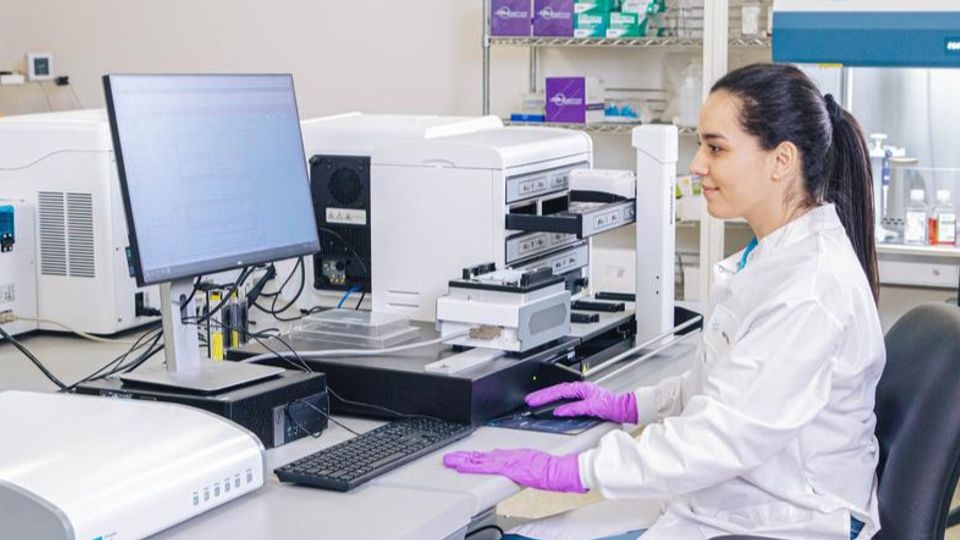The Genesis of Cell Therapy: Bridging Traditional Pharmacology and Gene Therapy
Rapid advancements are pushing the boundaries of patient care further and faster than ever before

Complete the form below to unlock access to ALL audio articles.
As someone deeply immersed in the field of cell therapy, it thrills me to witness the rapid advancements that are pushing the boundaries of patient care further and faster than ever before. Immuno-oncology and cell-based treatments, which harness the body's own immune system to combat illnesses like cancer, have emerged as some of the most promising areas of study. Over the past decade, these therapies have set new therapeutic benchmarks, particularly in hematological cancers.
Traditional pharmacology vs. gene therapy
Traditional pharmacological approaches, commonly referred to as drug therapy, use pharmaceutical compounds (small molecules, peptides and proteins such as antibodies) to treat conditions, alleviate pain, relieve symptoms or prevent diseases. A good example is the use of insulin to control diabetes. However, we observe that some drug treatments for chronic diseases, such as antirheumatics, can have serious long-term side effects, for example, increasing the risk of infections.
Gene therapies, on the other hand, offer a more targeted approach. They work by adding healthy copies of missing or malfunctioning genes and can be used to treat inherited genetic illnesses as well as acquired disorders, including cancers, cystic fibrosis, heart disease and diabetes. However, they can also have unwelcome side effects, including adverse immune system reactions, gene errors and tissue damage.
The benefits of cell therapy
What excites me most about cell therapy is its potential to revolutionize treatment. This approach involves modifying T cells to either increase their numbers or enhance their natural ability to recognize and destroy cancer cells. Included are chimeric antigen receptor (CAR) T-cell, tumor-infiltrating lymphocyte (TIL) and T-cell receptor (TCR) therapies. These cell-based treatments come in two types: autologous cell therapy, which uses cells from the patient, and allogeneic cell therapy, which employs cells harvested from a donor.
Using a person's own cells makes them less likely to be rejected compared to donor cells. However, both disease and various treatments can adversely impact the immune system of the patient, which can be overcome by pre-conditioning treatments that enhance the efficacy of cell therapy. Allogeneic therapy becomes a viable option for a large number of patients who cannot provide their own immune cells for cellular immunotherapy.
CAR T cancer treatment
Our body’s T cells – a type of white blood cell called lymphocytes – have evolved to protect us against infections and diseases. T-cell function is tightly controlled as part of a healthy immune response by peptide antigen presentation on specialized proteins called human leukocyte antigens (HLA). However, cancers can evolve to avoid detection by the immune system and T cells, making these cells harder to eliminate.
Fortunately, developments in genetic engineering enable the antigen-specificity of T cells to be edited, creating cell therapies that are tumor-specific. T cells harvested from a patient are reprogramed to express a synthetic protein receptor called chimeric antigen receptor (CAR) that can specifically latch on to protein targets on tumor cells and activate the T cells on their own. The CARs can be custom made to meet the needs of the individual patient.
The autologous creation of CAR T cells generally starts with leukapheresis to remove blood from the patient’s body and separate out the leukocytes. A CAR transgene is then introduced – an mRNA that contains the instructions that direct a cell to manufacture a specific protein. CAR gene delivery is generally achieved via a virus that has been engineered to be safe and not cause disease. Millions of the engineered CAR T cells are then grown in the laboratory before being introduced into the patient’s bloodstream where they attack the cancer.
Taking the CAR to the lab
As the world begins to use gene-modified cells as a therapy for treating diseases, the more we know about these cells, the better it is for therapy development and patient outcomes. Laboratories developing CAR T-cell therapies will need a range of equipment, including flow cytometers to analyze the cells based on their properties. For example, they can be used to ensure that a sufficient number of T cells express the CAR on the cell surface and characterize the cell populations in terms of immune-phenotypes, cellular activation and differentiation status. As scientists expand their flow cytometry panel size so they can simultaneously monitor up to 30 or even 40 surface proteins and biomarkers, the capabilities of the latest spectral flow cytometers will play an increasingly important role in analyzing the cell phenotypes, particularly for cell sub-populations with proteins and biomarkers expressed at low levels.
Scientists also need other cell analysis tools to study cell functions. For example, technologies that measure metabolism in live immune cells can provide a comprehensive picture of metabolic reprograming during cell processes such as immune cell activation, proliferation and memory development. Additionally, real-time cell analysis technologies offer robust in vitro assays to screen and evaluate the potency or efficacy of immune cells in killing cancer cells, offering the potential to predict the in vivo behavior of cell therapies.
They will also need polymerase chain reaction (PCR) and DNA sequencing tools to verify the presence and correct insertion of the CAR gene in the T cell’s DNA. These types of processes generate massive amounts of data, which need to be effectively stored and analyzed. This includes sequence alignment, gene and protein expression analysis and the analysis of genetic variation. Bioinformatics can also be used to predict how a change in a gene could affect the structure and function of the protein it encodes or model how different biological systems interact with each other.
Future developments
The development of CAR T cells for the treatment of cancers, such as leukemia and lymphomas, is highly promising. However, the approach of targeting single surface antigens on cancer cells may not be wholly effective, so there are developments to deliver enhanced specificity by targeting two or more antigens. This multi-targeting approach could also help to reduce "off-tumor" effects, where CAR T cells attack healthy cells that express the target antigen.
Attempts to target antigens in solid tumors have so far only achieved limited success, but research continues using CAR T cells that target multiple antigens. Solid tumors have a complex suppressive tumor microenvironment with cellular organization that includes a variety of immune and non-immune cells co-opted by the tumor cells. In many cases, T cells will have to infiltrate a heavily modified acellular extracellular matrix to reach their targets. In solid tumors, the T cells can face diverse adverse conditions, including low oxygen levels, high levels of acid, low levels of critical nutrients and high levels of adverse metabolites. Collectively, these factors could serve to suppress T-cell function.
Identifying common driver mutations – changes in the DNA sequence of genes that can cause cells to become cancerous – could potentially lead to the development of off-the-shelf CAR T-cell therapies that can be used to treat a wide range of patients. Research is also ongoing into ways to make CAR T cells survive longer in the body, enhancing their overall effectiveness.
Currently, CAR T-cell therapy is autologous, using T cells taken from the patient. While this process can be time-consuming and may not always be feasible, exciting advancements are on the horizon. Researchers are actively developing allogeneic CAR T-cell therapies, which involve modifying T cells from healthy donors to create versatile CAR T cells that could benefit any patient. Additionally, innovative research into xeno-derived cells – cells from other species such as pigs – is underway, offering new possibilities despite the medical and ethical considerations involved. The future of CAR T-cell therapy holds great promise, with cutting-edge developments paving the way for more accessible and effective treatments.


